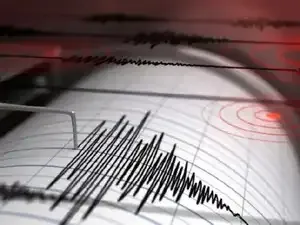A massive 7.3 magnitude earthquake struck near Sand Point, Alaska, on July 16, 2025, prompting an urgent tsunami warning for parts of the Alaskan Peninsula. According to the U.S. Geological Survey (USGS), the earthquake in Alaska occurred at 12:37 p.m. local time (AKDT) and was centered about 54 miles southeast of Sand Point, at a depth of approximately 12 miles (19 km).
The National Tsunami Warning Center confirmed a tsunami and issued alerts for coastal areas, including Sand Point, Cold Bay, and Kodiak. Waves were expected along the coast, and residents in the affected regions were urged to evacuate to higher ground immediately.
Also Read: Alaska earthquake of 7.3 magnitude strikes near Sand Point; tsunami warning for Kodiak, Cold Bay, and Unimak Pass
This Alaska earthquake is one of the strongest to hit the state in 2025 and has once again raised concerns about tsunami Alaska risks and seismic vulnerability in the region.
As people seek updates on the earthquake today, a key question remains: What type of earthquake was this? Was it a mainshock, foreshock, or are we likely to see aftershocks?
Understanding the difference can help explain what might happen next in Alaska.
A mainshock is the largest earthquake in a sequence. It typically causes the most damage and strongest ground shaking. The 7.3 Alaska earthquake today will be considered the mainshock, unless a stronger quake follows in the same region.
A foreshock is a smaller earthquake that precedes a larger one in the same location. However, a quake is only identified as a foreshock after a larger event happens. If another, more powerful earthquake Alaska experiences soon follows, today’s quake would be reclassified as a foreshock.
An aftershock is a smaller quake that follows the mainshock. It occurs in the same general area, usually within 1–2 fault lengths, and can happen days to even years later. These are minor readjustments along the fault line.
Because the recent Alaska earthquake was relatively shallow (about 12 miles deep), aftershocks may occur in the coming days.
As of now, the 7.3-magnitude quake near Sand Point is classified as the mainshock. If larger seismic activity follows, it may be redefined as a foreshock. If smaller tremors follow, those would be considered aftershocks.
The National Tsunami Warning Center confirmed a tsunami and issued alerts for coastal areas, including Sand Point, Cold Bay, and Kodiak. Waves were expected along the coast, and residents in the affected regions were urged to evacuate to higher ground immediately.
Also Read: Alaska earthquake of 7.3 magnitude strikes near Sand Point; tsunami warning for Kodiak, Cold Bay, and Unimak Pass
This Alaska earthquake is one of the strongest to hit the state in 2025 and has once again raised concerns about tsunami Alaska risks and seismic vulnerability in the region.
As people seek updates on the earthquake today, a key question remains: What type of earthquake was this? Was it a mainshock, foreshock, or are we likely to see aftershocks?
Understanding the difference can help explain what might happen next in Alaska.
Foreshocks, Mainshocks, and Aftershocks explained
Mainshock
A mainshock is the largest earthquake in a sequence. It typically causes the most damage and strongest ground shaking. The 7.3 Alaska earthquake today will be considered the mainshock, unless a stronger quake follows in the same region.
Foreshock
A foreshock is a smaller earthquake that precedes a larger one in the same location. However, a quake is only identified as a foreshock after a larger event happens. If another, more powerful earthquake Alaska experiences soon follows, today’s quake would be reclassified as a foreshock.
Aftershock
An aftershock is a smaller quake that follows the mainshock. It occurs in the same general area, usually within 1–2 fault lengths, and can happen days to even years later. These are minor readjustments along the fault line.
Because the recent Alaska earthquake was relatively shallow (about 12 miles deep), aftershocks may occur in the coming days.
So, which type of quick was the Alaskan one?
As of now, the 7.3-magnitude quake near Sand Point is classified as the mainshock. If larger seismic activity follows, it may be redefined as a foreshock. If smaller tremors follow, those would be considered aftershocks.





